And what about the nine male elephants in the next room? “Being the only girl’s never been a problem for me,” says engineering star Rachel Kendall. “I grew up in the country, racing, and have always been a bit of tomboy.”
Welcome to Day 2, Activity #3: Interviews with the Press.
Next, Félix Lamy says, “I’m part of the McGill Formula One SAE team. I once almost got to drive our race team’s car around the Circuit Gilles Villeneuve after the race. Almost,” he sweetly grins, as though almost counts.
Ten engineering students (some are freshly graduated) have been culled down from over 300 applicants for this, the Infiniti Engineering Academy Canadian showdown. Part-job interview, part-blood-sport-cum-reality-TV-show, it’s a two-day competition for a year-long paid internship in Europe: six months in France, working as a contributing member of the Renault F1 team; and six months at Infiniti UK in product development. A dream gig!
This marks the first year that Canada gets its own spot at the three-year-old Academy. When the international search is complete in October, there will also be representation from USA, Mexico, Europe, China, the rest of Asia-Pacific and the United Arab Emirates.
How does Canada command as much importance as China, or the USA, or all of Europe including the UK and Russia put together? We are Infiniti’s third largest market for sales.
At the moment the applicants are speaking to us, the press, who’ve been invited to witness this two-day spectacle in Montreal. For this Activity #3, we are to interview them all individually with the same questions and score their answers.
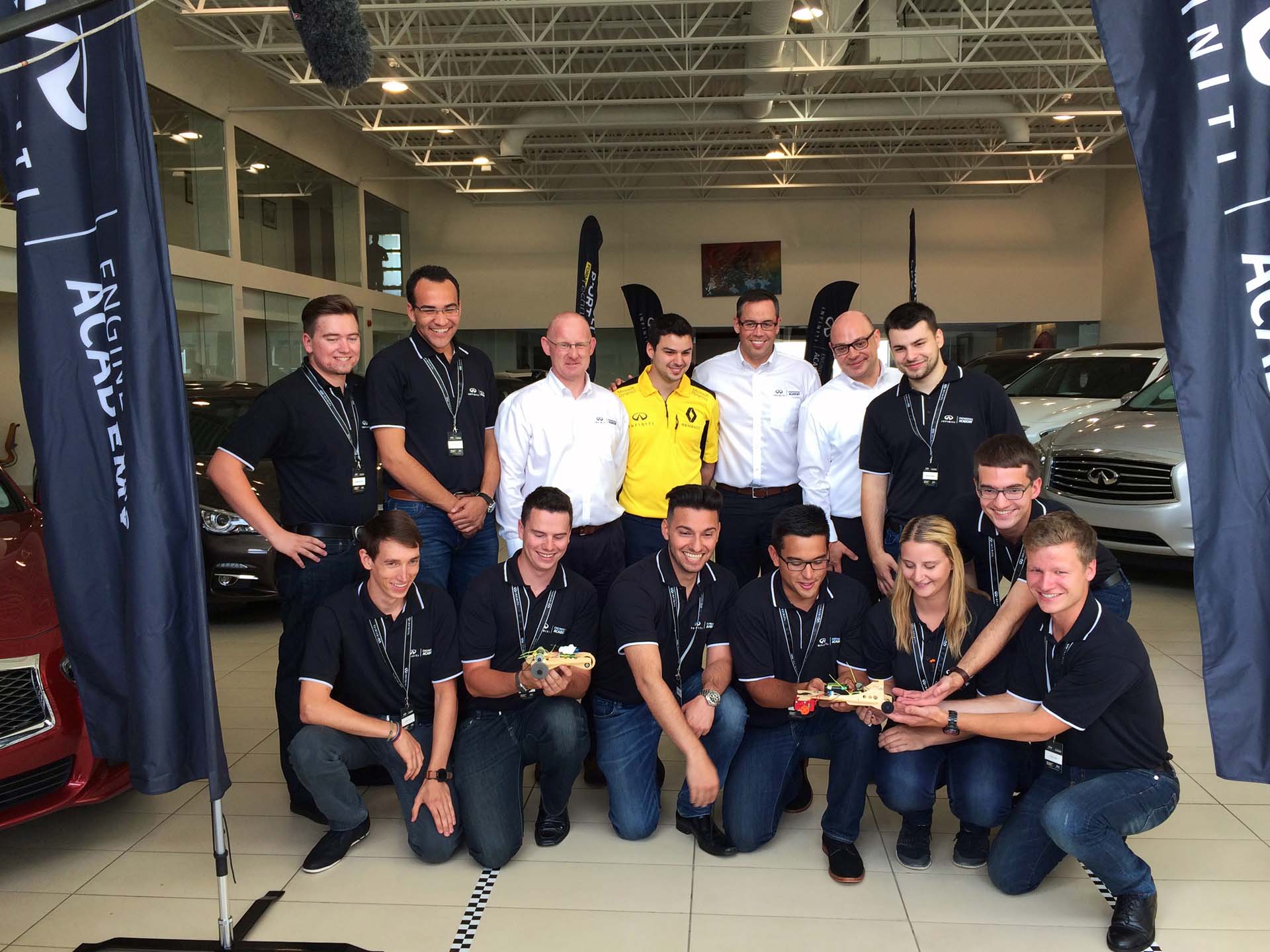
Later the judges will factor our ratings will into their final decision but now won’t say by how much. Is Activity #3 just a tactic to get us out of the way? These engineering students may be young but auto writers are babies. Without having to feed, water and burp us for over two hours, the judges can get lots done.
Clearly, the questions we ask were anticipated. “Why do you want to work in F1?” (We may as well have asked who their influences are!) Nearly all the students robotically elicit how Formula One represents the pinnacle of the automotive engineering world and how they thrive on pressure.
So after the canned questions, we individually veer off track. The answers improve.
“In ten years, I’d like to be able to say that my contribution to the F1 team took a full second off the driving time per lap,” Santiago de la Rosa of the University of Calgary pronounces, his confident demeanor suggesting I got this.
“If I don’t get this,” says Dalhousie grad Ian Finlayson, “I’m in the running for an engineering maintenance job at the petrochemical plant in Saint John.”
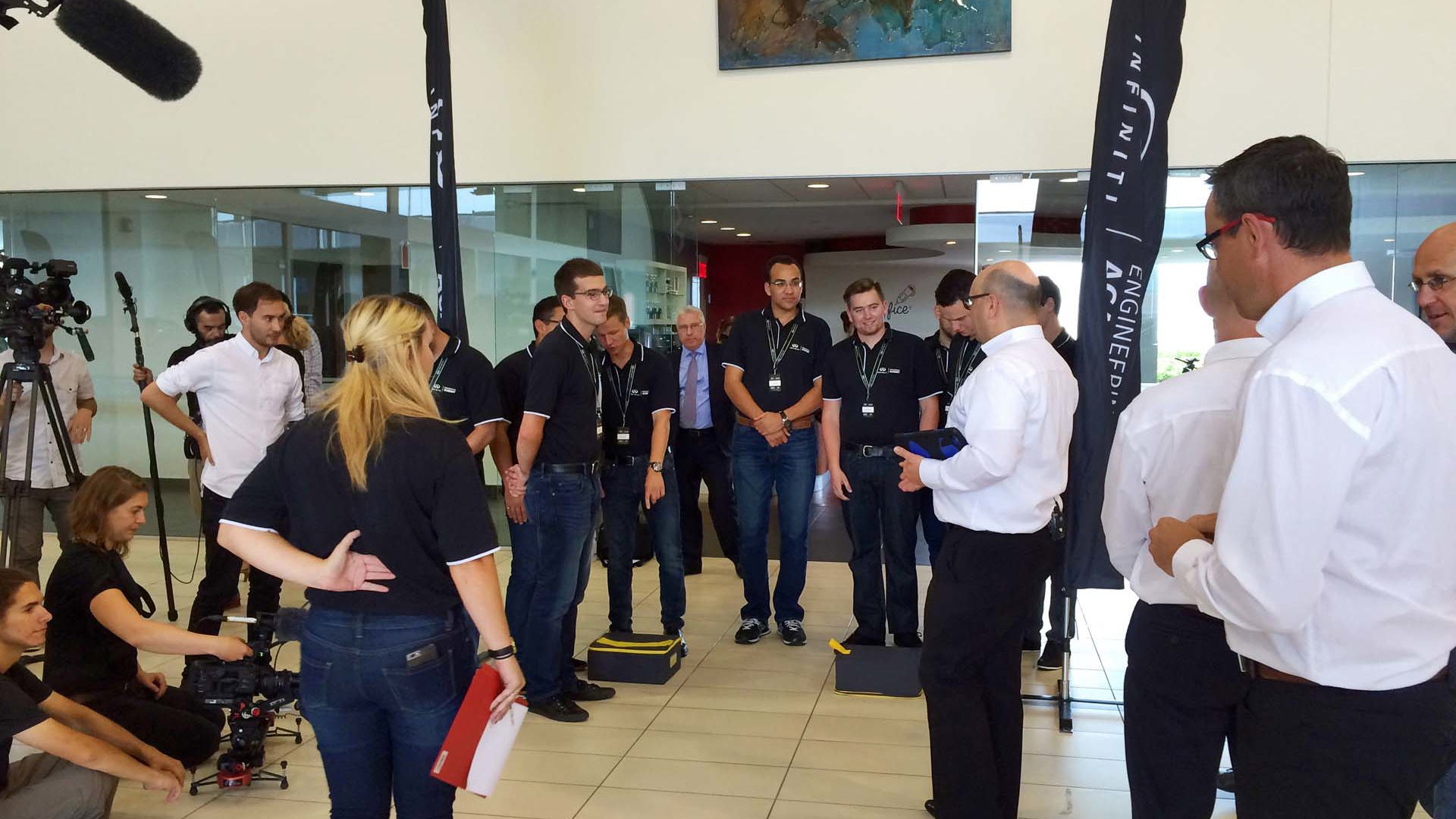
Backup plans and flexibility are important. The contestants must be able to thrive in both the Infiniti Corporate and Renault Sport F1 cultures. They must have all the engineering and softer social skills to immediately perform at a professional level.
All contestants impress us but three or four blow us away with their Zen composure. Just imagine jumping from Baltic Avenue to Park Place – or Mississauga to Monte Carlo – overnight. Wisely, they’ve all chosen to wear dark jeans with their black Renault Sport F1 shirts.
The event started yesterday at 3pm. There were two activities.
First, there was an icebreaker. In two teams, students were given three parts of an F1 car and asked skill-testing questions. The idea? “Get them talking and thinking as a team,” says Andy Todd, Director of Body & Exterior Engineering, Infiniti Technical Centre Europe, and today’s lead judge. The team that won the quiz got first choice in the second task.
Which was? The Hybrid Challenge Part 1: The teams had to build a miniature drag racer using two different energy sources. First, each team got a package containing a standard battery EV. Activity #1’s winners got to choose between four power plants to add to the racer: 1) a gear battery motor 2) a solar-powered propeller 3) a solar-powered electric motor and 4) an electrolytic cell.
Yes, the losing team got to choose from the remaining three.
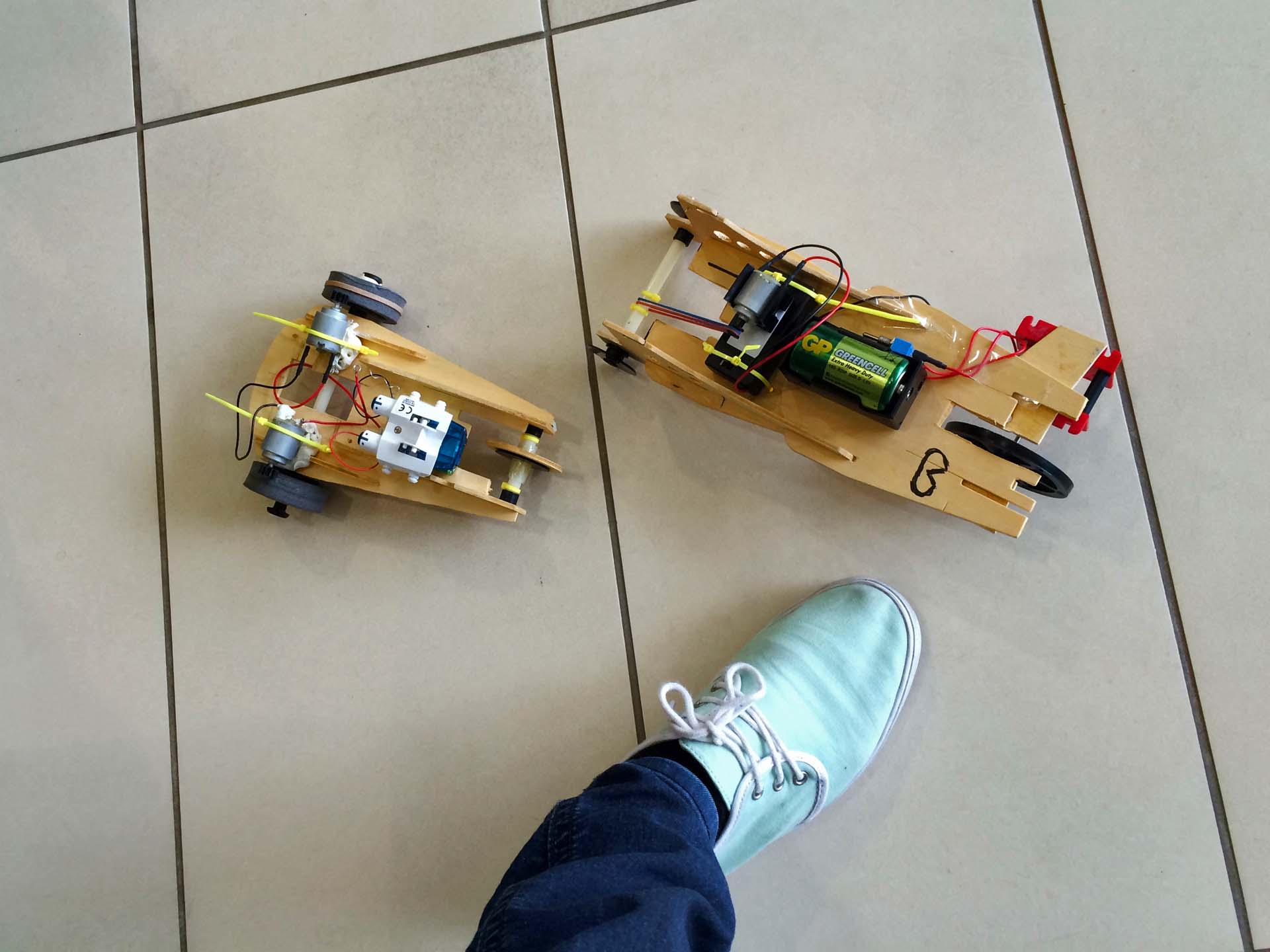
The teams needed to explain their choice to the judges. For instance, the competition was conducted indoors – so the solar-powered sources wouldn’t be much help, would they?
(Surprise! During this Hybrid Challenge, there was an eleventh participant, an auto writer from one of Canada’s papers and engineering grad from 1973. He participated as part of his story and his presence on the squads didn’t bother the judges. (Indeed, it provided more context. How do the candidates interact with grownups?) Though similarly clad and hoping to blend in, the writer was still as inconspicuous as whitewall radials on a Renault F1 racer. “Don’t you dare put me in your story,” he baldly threatened. Oops.)
But seriously, this is real competition.
Neither team finishes the task by the assigned deadline. Both are penalized. Meanwhile a Swiss judge questions why they’re being so gentlemanly. He says he wants to see “feu au cul” whose Google translation, “fire in the ass”, would probably better describe spicy food in English but actually means exceptional passion, or fire in the belly – a willingness to do whatever it takes, possibly even cheat.
You know: like F1.
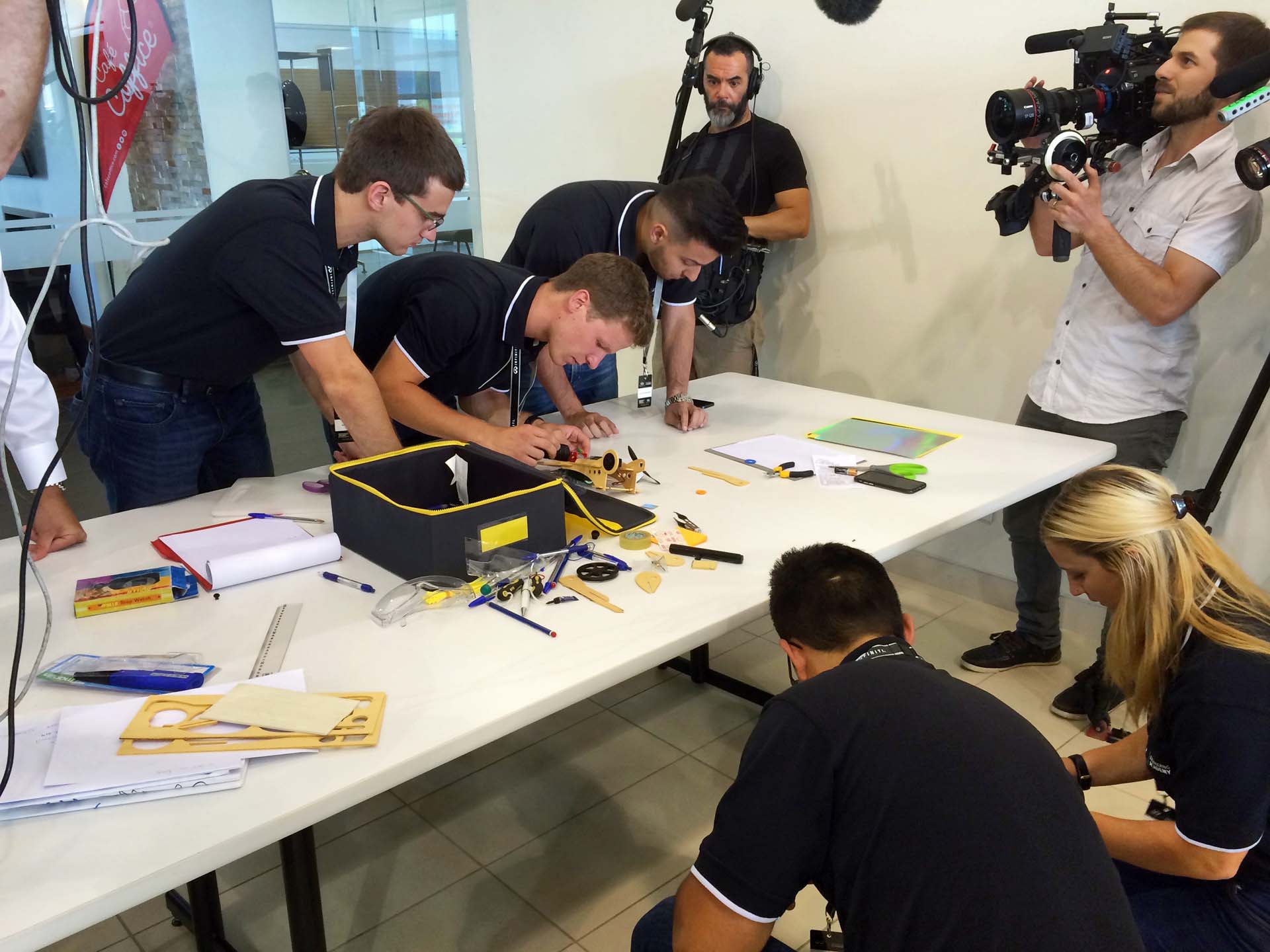
Several journalists missed this brief opening session of the competition on Wednesday but were invited out for a group dinner with the contestants and judges. Supposedly the judges’ pens were put away but if any challenger had gotten drunk and started a fight, or ordered the vegan entrée, chances are good it would’ve affected their standing.
Day 2: The Cranfield factory design challenge.
The atmosphere at the Infiniti Engineering Academy event is like driving in Montreal: mostly a lot of nervous standing around, waiting for something to happen, suddenly punctuated by bursts of hyper-activity, tinged with panic. This first exercise of the day is one of those panicky outbursts and unlike any engineering school assignment.
Divided into new teams, the combatants have forty minutes to co-design a factory. Wow!
There’s a lot to consider for the factory to work properly: flow of parts in and out of the factory; parking; direct onsite sales to customers – and who knows how many other things those of us who’ve never designed factories have yet to think of.
“They probably were expecting something more technical this morning, yes?” brays Andy Todd in his north England drawl. “What we’re looking for is how they work in a team. Yes? We know this exercise will tell us which of them could participate well in meetings.”

They have a map with specific geographic limitations and dimensions, including public roads and a river, “which prevents them from expanding the factory but doesn’t stop them from knocking a few holes in the walls.”
We watch them brainstorming in real time in spotlight – but not just us. Four fully kitted camera crews shoot the event to generate PR material from it. We in the press quietly observe in packs, carefully out of the shooters’ eyes.
The pressure is ugly. In Nashville, two weeks earlier, the top three contestants vying for the American place at the Infiniti Engineering Academy were virtually tied. So every decision these kids make could also break them.
The judges observe how the candidates deal with adversity, time constraints and differences of opinion. Todd sees them wondering, “Is this dog-eat-dog? Do I go all-out and kill everybody else in the room for this job? Or do I need to show some team spirit and get everybody involved?”
Then he smiles evilly. “So it’s very interesting, yes?”
With ten minutes left in the Cranfield Factory design, Todd notches the tension even higher. Each team will elect two speakers, whose total presentation time mustn’t exceed five minutes. The first presenter will explain how they worked as a team, the second their solution. “You have nine minutes left to prepare.”
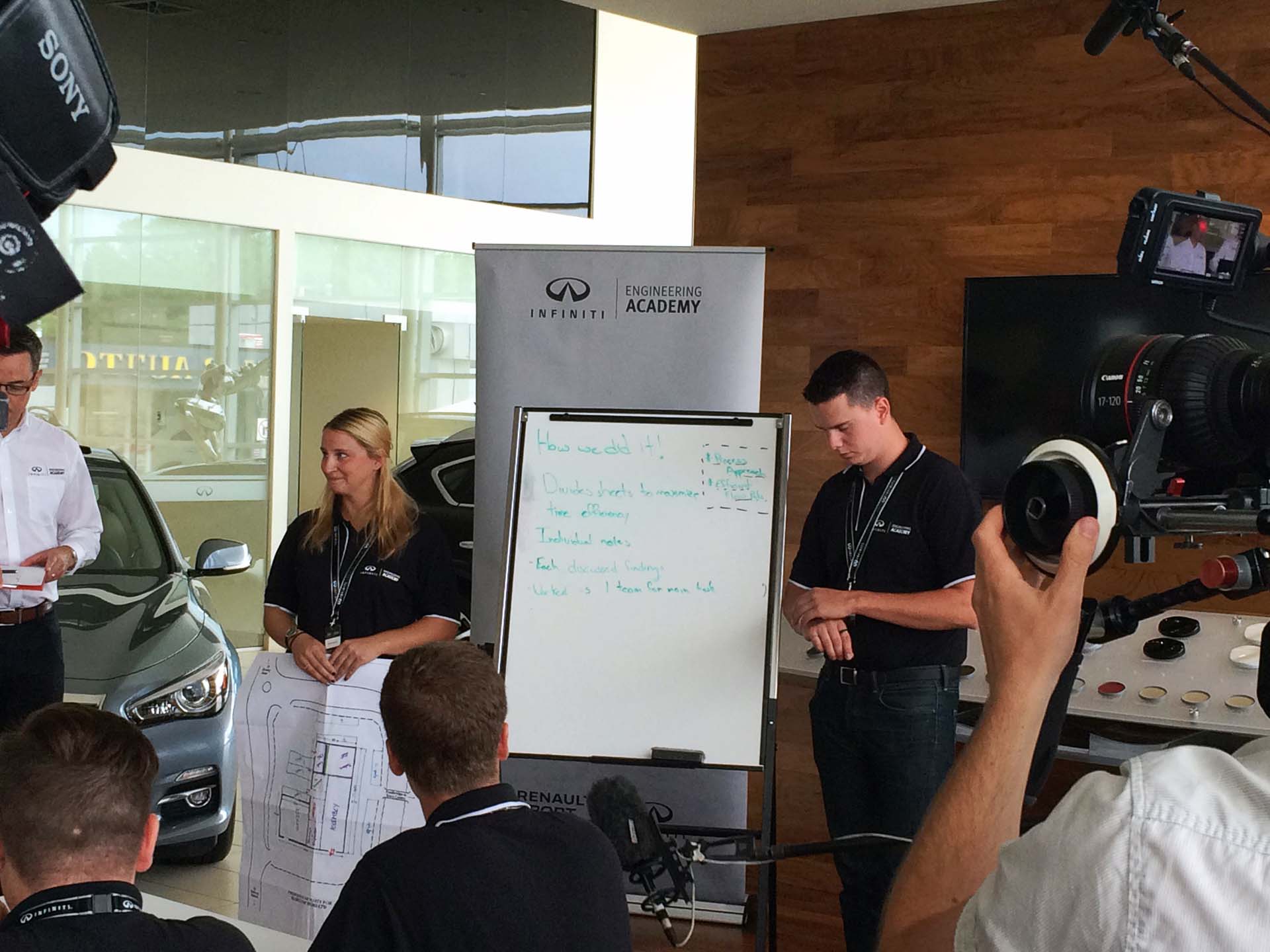
Nine and a half minutes later, the presentations are remarkably cogent, all things considered.
It seems harsh but Infiniti Europe has done this exercise for the past 25 years to recruit every member of R&D. “I went through this 18 years ago,” says Todd. “My director went through this five years before me.” Students planning to apply in 2017 would be wise to note that.
Despite the dangling Renault F1 carrot, you never forget this is also Infiniti.
The competition is held in Montreal’s pristine Luciani Infiniti dealership, a ballroom of a showroom where Infiniti Canada puts on le chien annually for F1 events. It’s almost as much art gallery as garage – in this case, “almost” does count – Luciani Infiniti has a shiny espresso bar, whose cheery staff make skillful macchiatos, cappuccinos and even smoothies, which they offer to top with protein. “Protein?”
“Yes, protein. You want some?”
“What, are you gonna slaughter a chicken or something and throw it in?” Turns out, they have a powder. I politely decline.
Day 2: Hybrid Challenge, Part 2.
The teams are now assembling the miniature drag racers they designed yesterday afternoon. In a little over an hour, they will race them down a twenty-meter “track” – tape on the dealership floor. They must complete their assembly by 4:15, lest they be penalized again. The races will be a best-of-five series.
By 4:30 it’s all over. And what an anti-climactic Canadian finish!
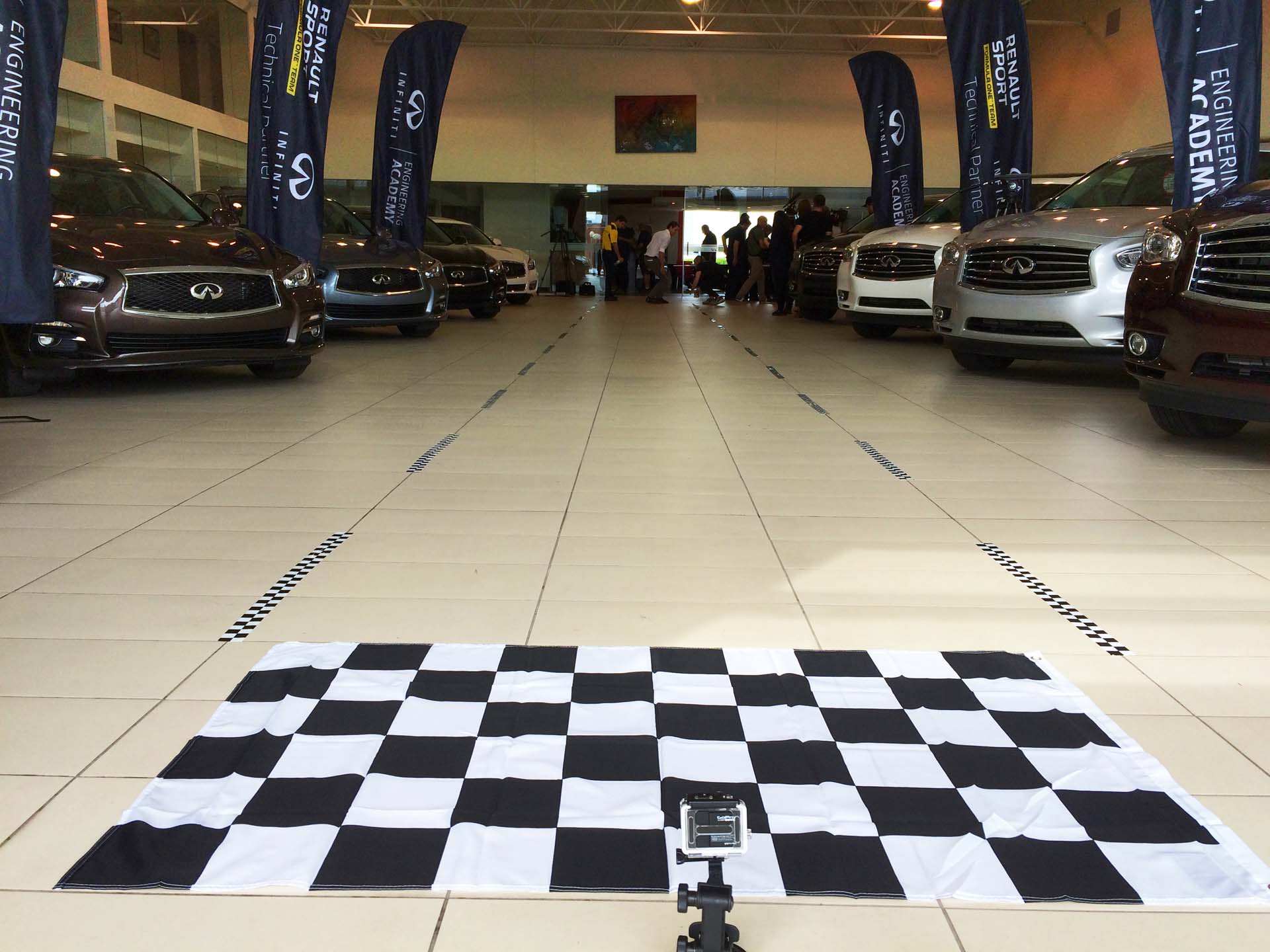
The drag racers continually veered out of bounds or simply stalled. Throughout five heats, only one car actually made it across the finish line. After the second heat, the judges called a timeout and let the teams re-fiddle with their racers for a few minutes. During the timeout, the second team’s racer actually drove most of the distance. It was stuck in a rut in the grouting of the floor, conveniently preventing it from exiting the boundaries of the track. However neither team was able to repeat the trick and exploit the same channel during the subsequent heats.
The judges even decided to go to penalty kicks, so to speak, holding another heat, possibly hoping for a photo op. Neither racer made the distance.
Fortunately this is about much more than building a drag racer. The winner is...
The judges still have hundreds of metrics to factor. They deliberate for nearly an extra hour. As with the American competition, the top finalists are neck and neck. Eventually they come to a decision: Felix Lamy from Gatineau, Quebec, and McGill University.
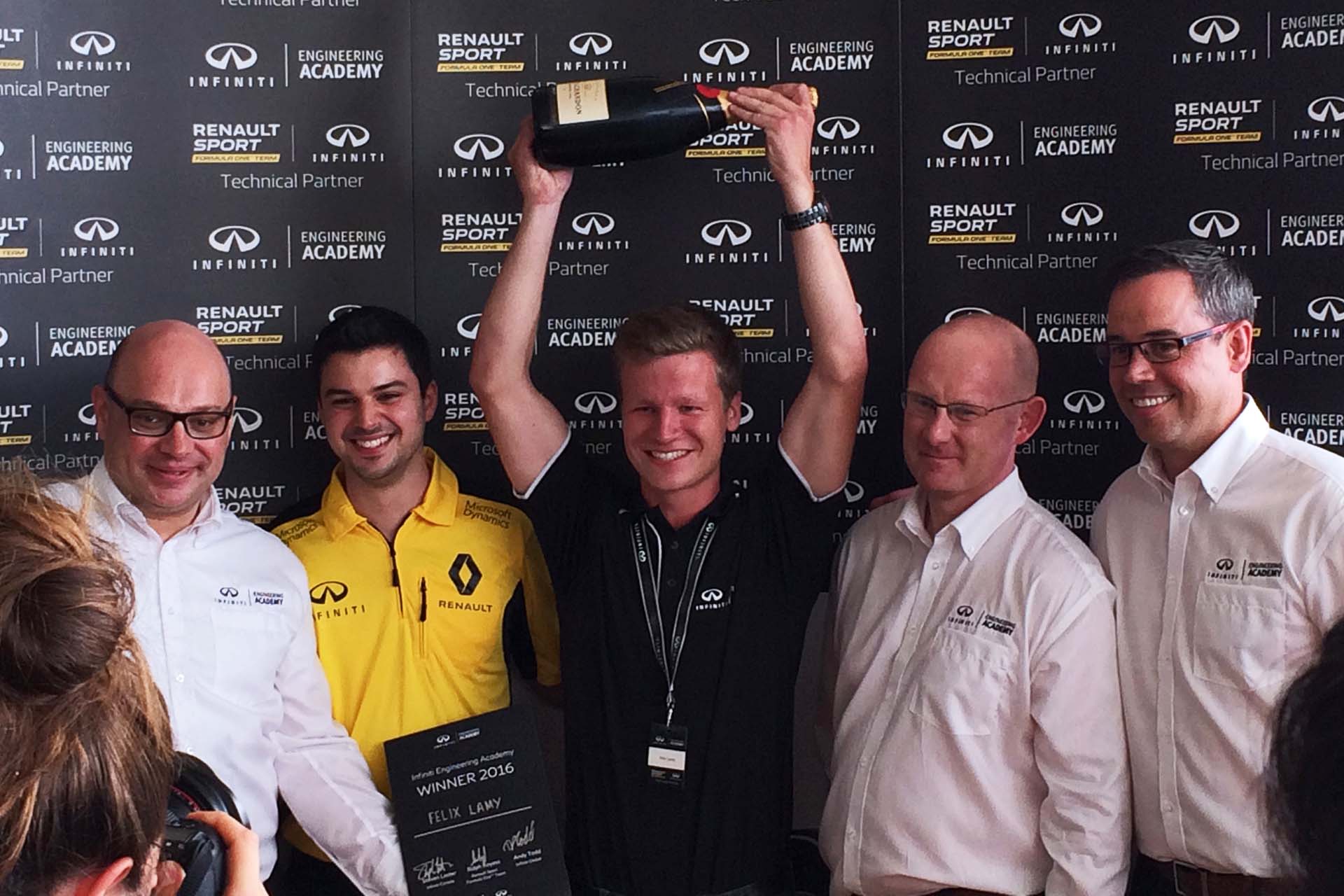
When announcing their winner, the judges continually reiterate how well Felix communicates his passion for the sport. Local judge and Managing Director of Infiniti Canada, Stephen Lester says, “now Infiniti Canada has an ambassador for the brand connected to sport, performance, engineering and education.”
Lamy the winner is simply gob-smacked! He’s prepared his whole life for this overnight success and has yet to “absorb the news”.
Speaking of overnight, I ask what he’s doing tomorrow. “The McGill Student Formula SAE team competes in Germany in a week. So I’m flying out to meet the car in Frankfurt.”
Lamy’s so high on life right now he could almost fly that plane himself. In this case almost definitely counts.















